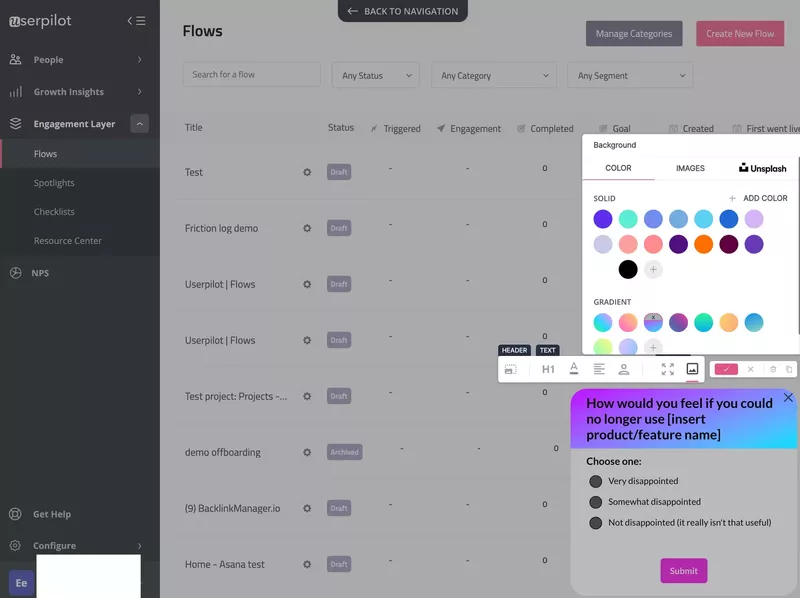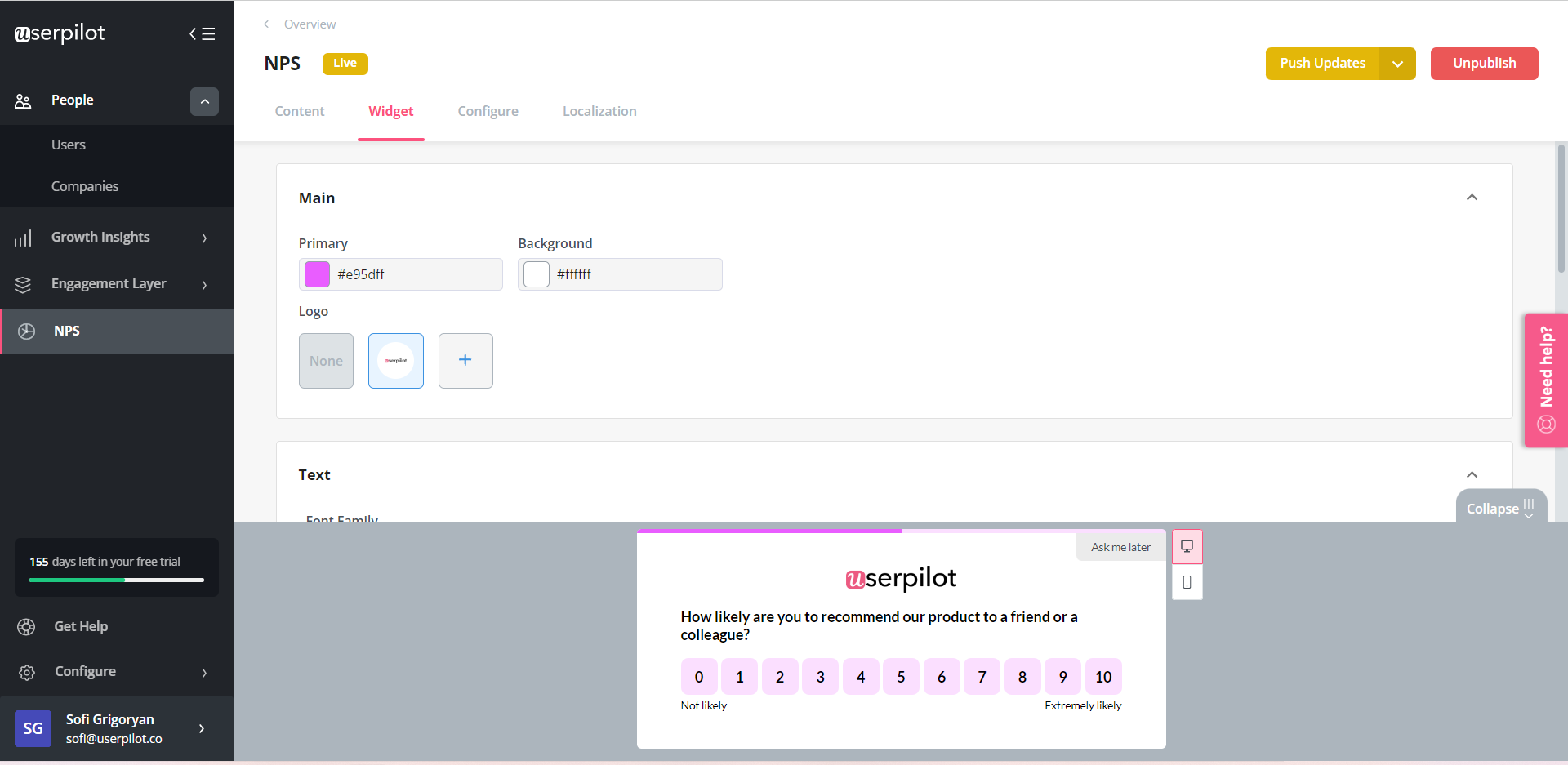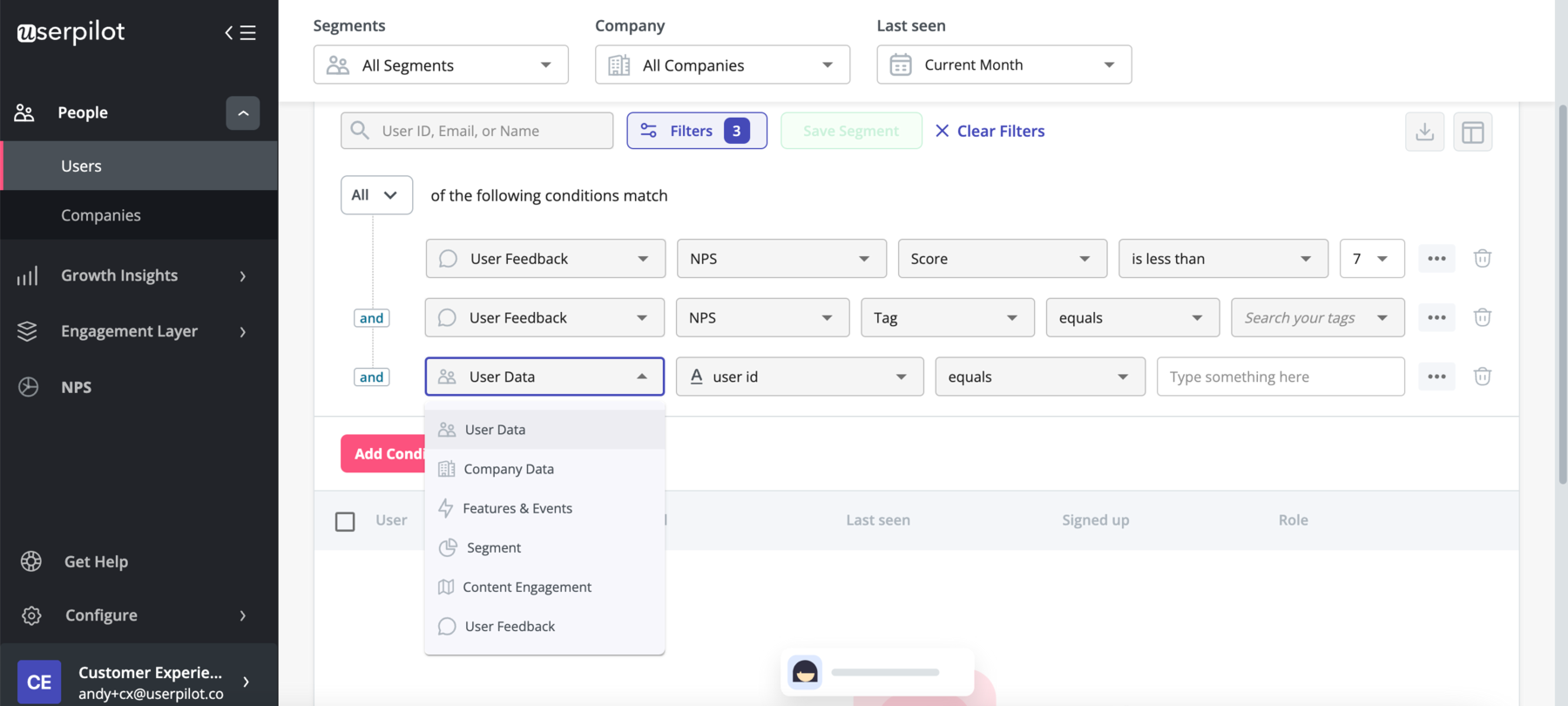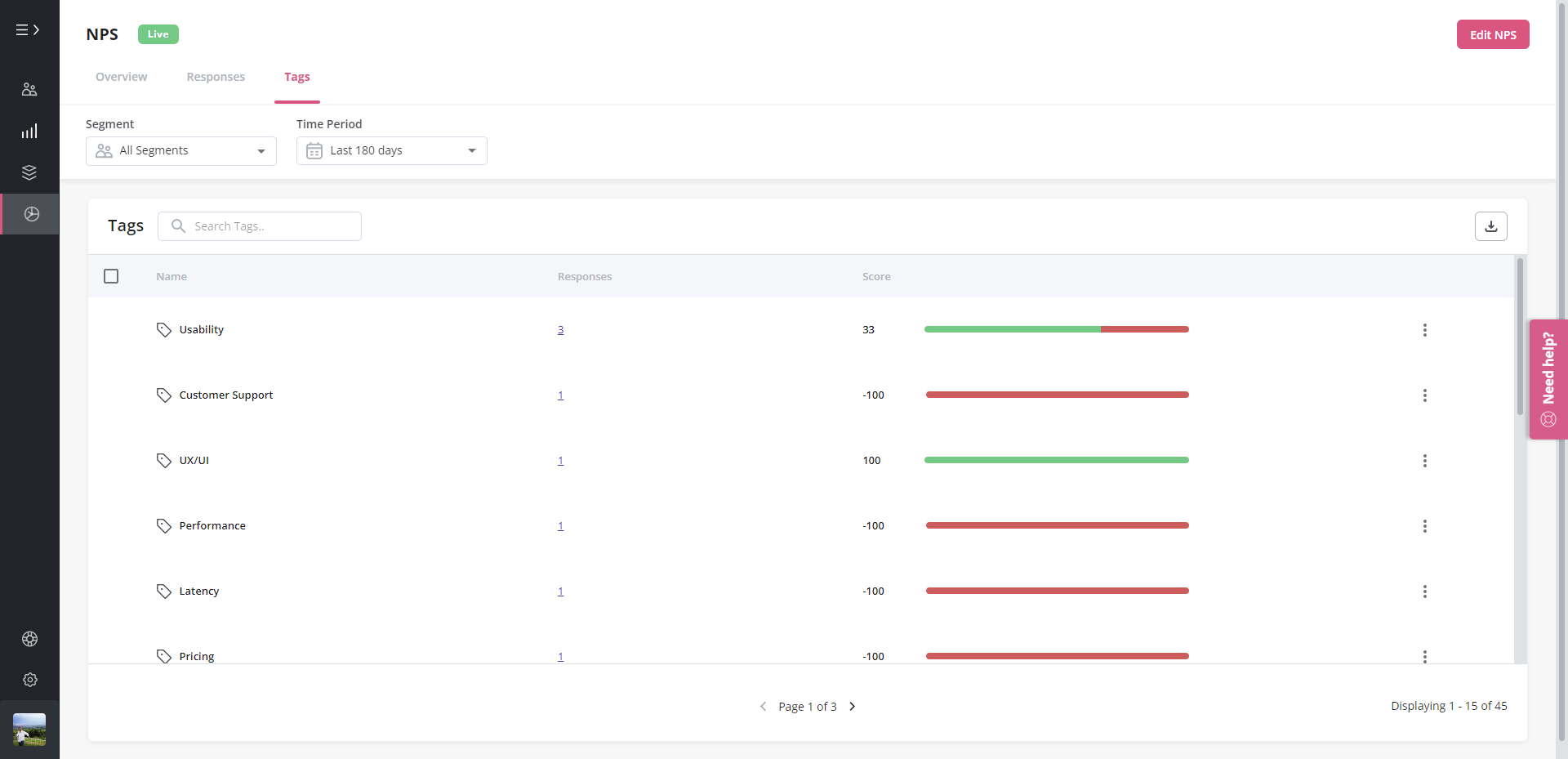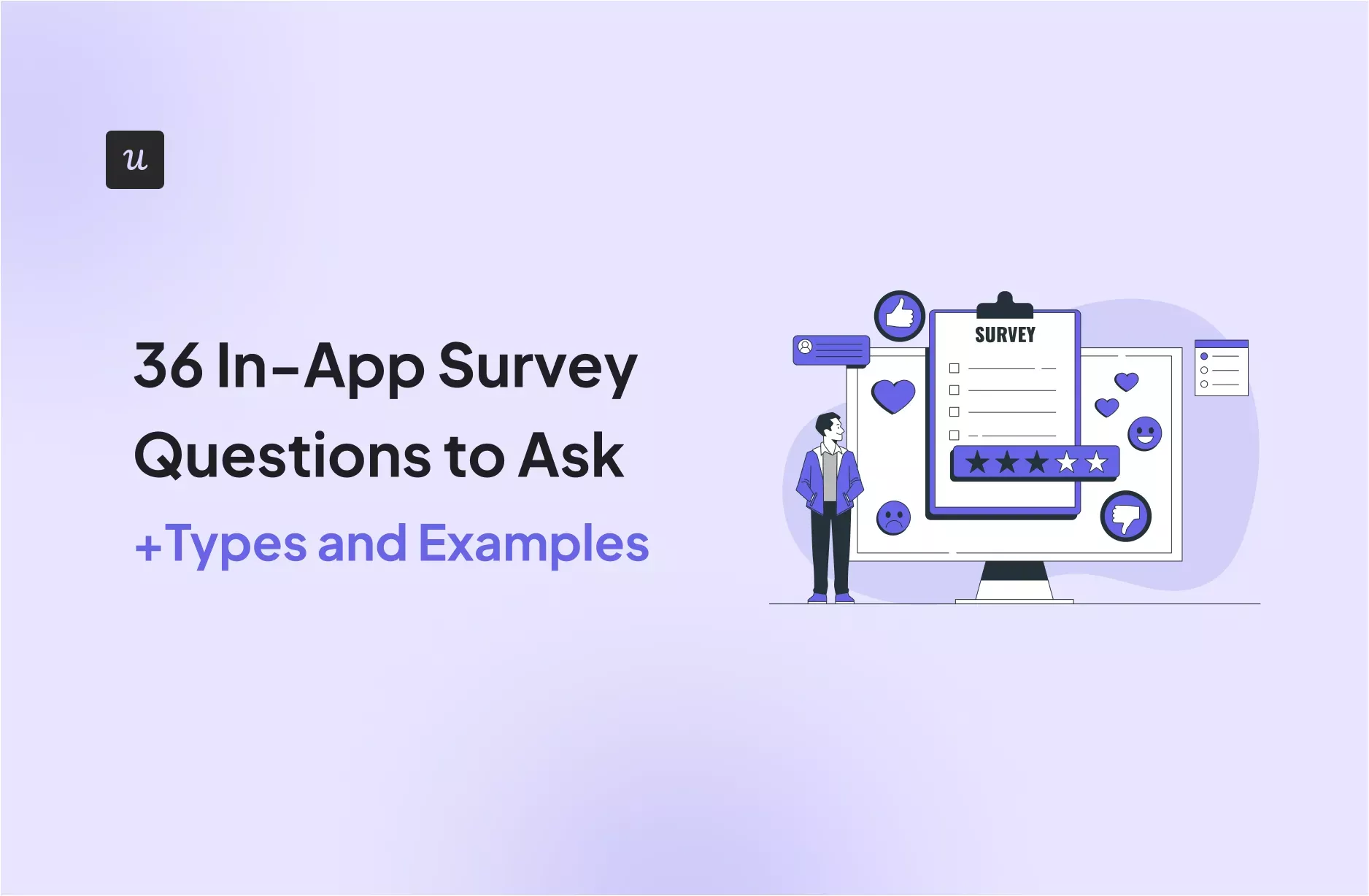
Domande di sondaggio in-app: Migliori pratiche, tipi ed esempi
Le domande dei sondaggi in-app possono essere uno degli strumenti più efficaci per la ricerca sui prodotti.
Raccogliendo i feedback direttamente dalla vostra base di clienti (o nelle app per dispositivi mobili) su come è stata la loro esperienza con il vostro prodotto, su cosa non piace agli utenti e su quali sono i loro problemi, potete correggerli e costruire prodotti straordinari e migliorare l’esperienza dei clienti.
Ma la creazione di sondaggi è un po’ un’opera d’arte. È necessario considerare ogni aspetto, dal percorso dell’utente al contesto della domanda posta.
Abbiamo messo insieme una guida rapida per voi, che include le migliori pratiche, i tipi di sondaggi e gli esempi di domande da porre ai vostri utenti!
Get The Insights!
The fastest way to learn about Product Growth, Management & Trends.
TL;DR
-
I sondaggi in-app vi aiutano a scoprire continuamente i prodotti e a creare esperienze di prodotto migliori.
-
Con le giuste domande per i sondaggi sulle app, è possibile ottenere un feedback mirato dagli utenti, tassi di risposta più elevati e ottenere informazioni utili.
-
Prima di scrivere le domande del sondaggio in-app, delineate lo scopo del vostro sondaggio, formulate in modo efficace le domande e scegliete il tipo di feedback che volete raccogliere. Successivamente, segmentate gli utenti a cui volete inviare il sondaggio e fate un test con le vostre domande.
-
Le domande di un buon sondaggio in-app includono domande di ricerca di mercato e di sondaggio sulla persona dell’utente, domande sulla soddisfazione e sull’esperienza dell’utente, domande sull’esperienza del servizio clienti, ecc.
-
Per creare sondaggi sulle app, è necessario uno strumento. Che si tratti di un sondaggio NPS per misurare la soddisfazione degli utenti o semplicemente di far rimbalzare le idee dei clienti al team di sviluppo, con Userpilot si può fare tutto senza scrivere una riga di codice.
-
L’unico svantaggio di Userpilot è che non supporta i sondaggi per le app mobili.
Create sondaggi in-app con Userpilot!
Cosa sono i sondaggi in-app?
I feedback degli utenti possono essere raccolti tramite sondaggi in-app, che sono un modo eccellente per entrare in contatto con i vostri clienti.
Utilizzando i sondaggi, è possibile raccogliere preziosi feedback dei clienti sull’UX del prodotto, sulle caratteristiche, sulle funzionalità e sull’onboarding. È possibile conoscere l’opinione dei clienti sulla vostra applicazione nel suo complesso o il modo in cui gli utenti interagiscono con le sue singole funzionalità.
È possibile raccogliere sondaggi sulle app con sondaggi sulle app mobili o sondaggi web in-app.
Perché le domande del sondaggio sulle app sono importanti?
Sicuramente vi starete chiedendo: perché non posso semplicemente inviare un sondaggio via e-mail?
Il punto è che l’invio di un sondaggio può portare a qualche risultato, ma non si sta rivolgendo agli utenti nel punto in cui si trovano, mentre la loro mente è fresca dell’esperienza più recente.
La raccolta di feedback in-app può portare a voi e al vostro team una grande quantità di conoscenze e di intuizioni dalla vostra base di clienti. I vantaggi della raccolta di feedback in-app includono:
-
Feedback mirato degli utenti – Potete segmentare la vostra base clienti e raccogliere il feedback di un segmento specifico di utenti (nuovi clienti, beta tester, utenti fedeli dell’applicazione, ecc.)
-
Tassi di risposta più elevati – I clienti sono più propensi a rispondere alle vostre domande in-app, dove si trovano. È più facile raccogliere i feedback di un’applicazione mobile piuttosto che sottrarre tempo alla loro giornata per rispondere a un questionario via e-mail.
-
Ottenere informazioni utili – I sondaggi in-app consentono di raccogliere informazioni sul posto e di utilizzarle per creare esperienze e funzionalità migliori.
-
Ciclo di feedback più veloce – È più facile chiudere il ciclo di feedback perché tutto avviene in un’unica piattaforma.
L’aspetto fondamentale è che porre le domande giuste al momento giusto consentirà al team di capire dove sono i potenziali problemi e i punti di attrito. Sapere cosa, come e quando chiedere nei sondaggi è fondamentale.
Chi può beneficiare dei sondaggi in-app?
Inoltre, le domande dei sondaggi in-app non sono solo a beneficio dei team di prodotto. Ecco come le altre squadre possono trarne vantaggio:
-
I team di prodotto e i responsabili di prodotto possono ottimizzare le personas e i percorsi degli utenti per un’esperienza più personalizzata.
-
I team di successo possono conoscere i loro clienti e impostarli per la crescita, migliorando l’esperienza in-app.
-
Il marketing ha una migliore comprensione di come creare conversazioni con i pubblici di riferimento, i settori verticali e le industrie.
-
I team di vendita possono qualificare meglio i contatti prima dell’acquisto e assicurarsi che il prodotto sia adatto al cliente.
Come scrivere le domande dei sondaggi in-app?
Prima di scrivere le domande dei sondaggi in-app, è necessario avere una chiara comprensione di ciò che si vuole ottenere con i sondaggi. Questo è l’intero processo che sta dietro ai sondaggi in-app.
Definire l’obiettivo dell’indagine
È importante delineare lo scopo del sondaggio in-app. Se riuscite a identificare il problema che state cercando di risolvere, questo vi aiuterà a definire le modalità di formulazione delle domande. Quindi, prima di iniziare, ponetevi queste domande:
-
Qual è l’obiettivo del sondaggio in-app?
-
Cosa state cercando di imparare e cosa farete con ciò che imparate?
-
Qual è il risultato che sperate di ottenere da questo esercizio?
Assicuratevi che i vostri obiettivi seguano un quadro di riferimento come quello riportato di seguito.

Formulare le domande in modo efficace
Il modo in cui si formulano le domande è incredibilmente importante. La cosa fondamentale è fare attenzione ai favoritismi involontari.
Non inserite i vostri pregiudizi impostando la domanda in modo da aspettarvi una risposta positiva o negativa (ad esempio, “Sei stato frustrato nell’uso di questo strumento?” implica che vi aspettate una frustrazione. Chiedete invece: “Hai raggiunto il tuo obiettivo?”).
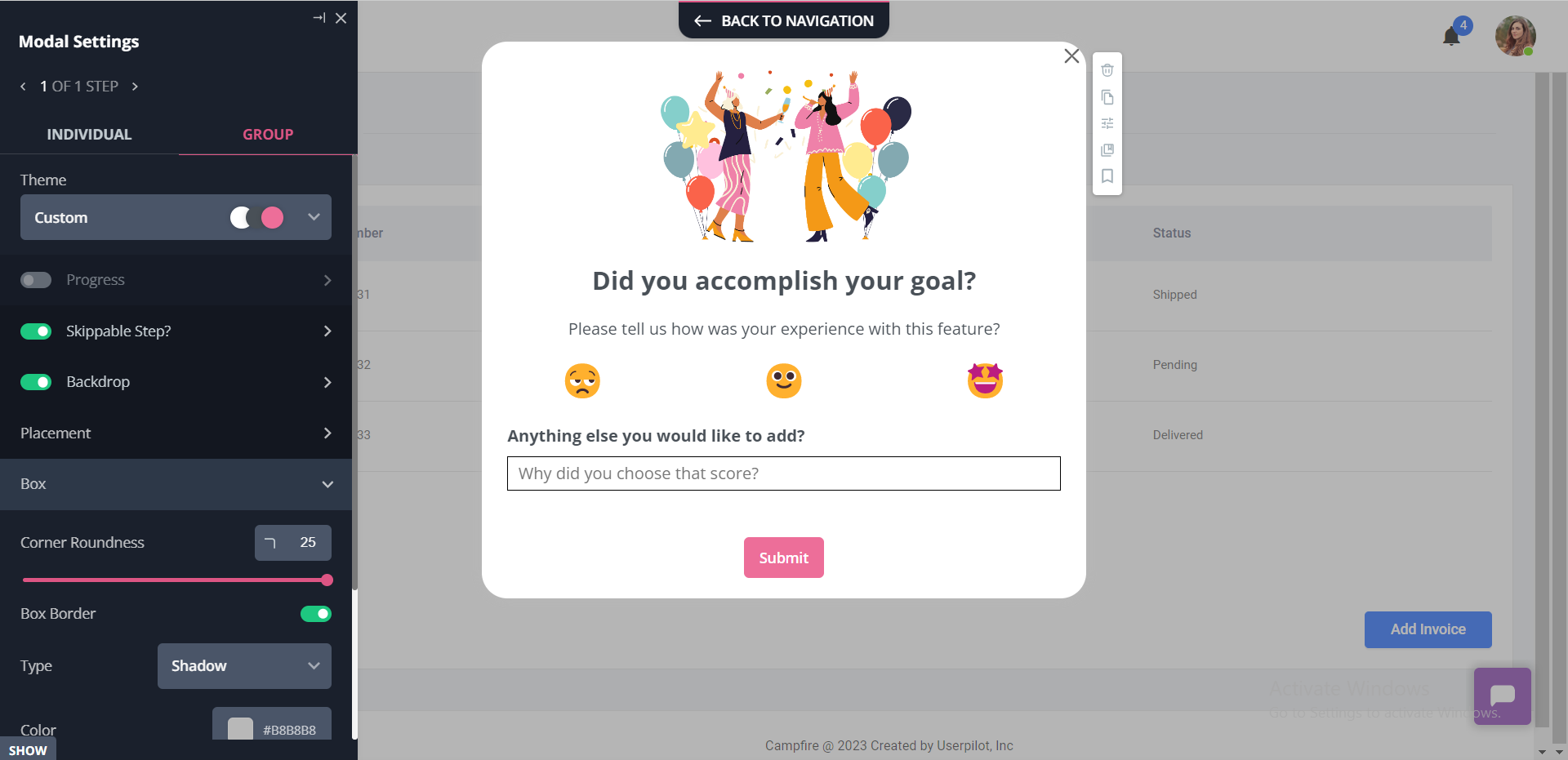
Quando si scrivono le domande e le rispettive istruzioni, è anche importante mantenere le frasi brevi e concise. Le persone hanno già l’abitudine di scremare, quindi più lunga o complicata è la domanda, meno valore ne ricaverete.
Scegliete il tipo di feedback che volete raccogliere
Se volete raccogliere un feedback qualitativo, potete usare domande aperte. Le domande aperte sono quelle che permettono all’utente di descrivere qualcosa con parole proprie.
Il vantaggio è che si possono ottenere maggiori informazioni sull’esperienza e si possono anche scoprire altre possibilità di risolvere problemi che non si stavano cercando.
Se invece volete raccogliere un feedback quantitativo, le domande a risposta chiusa sono perfette. Le domande a risposta chiusa sono quelle che prevedono opzioni predefinite come:
-
Scala da 1 a 10
-
Scelta singola
-
Scelta multipla
-
Ordine di classifica
Questo tipo di domande aiuta a capire i parametri di riferimento e le tendenze, che sono utili quando si conducono indagini nel tempo.
Se possibile, cercate di evitare le risposte sì/no, ma se lo fate, ricordate di chiedere perché (e cosa, quale, come e descrivere per ottenere un feedback più qualitativo che vada oltre il semplice “sì” o “no”). In questo modo, si può scavare più a fondo e non perdersi in ciò che ci dicono i soli dati, ma anche ciò che ci dice il cliente.
Inviare sondaggi mirati
Per ottenere il massimo dalla ricerca sui prodotti è necessario capire a chi ci si rivolge.
La segmentazione degli utenti vi darà una visione più precisa del modo in cui i diversi utenti interagiscono con la vostra applicazione, in base al ruolo, allo status o al punto in cui si trovano nel loro customer journey.
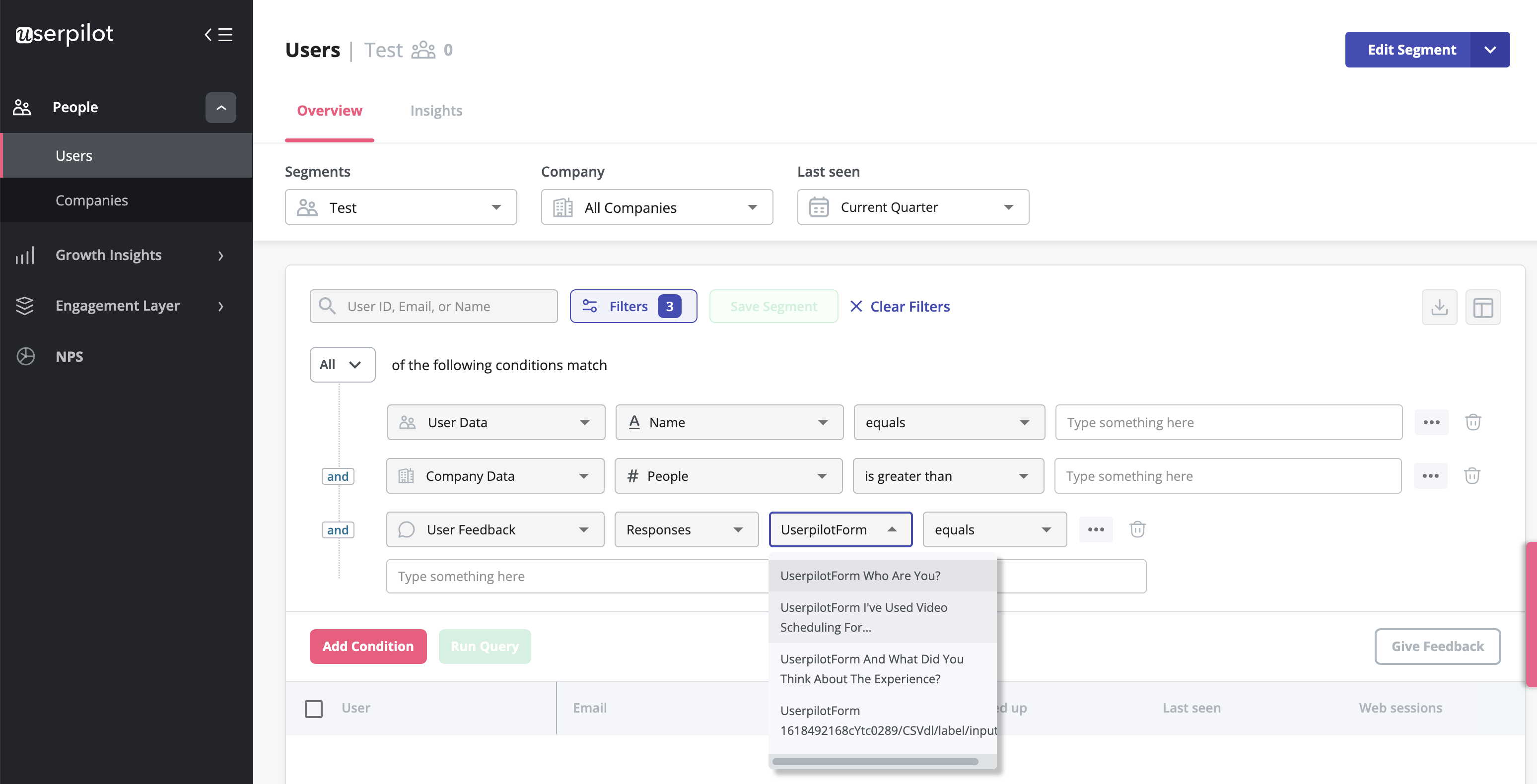
È inoltre possibile sfruttare gli eventi personalizzati per mostrare domande specifiche solo alla parte del pubblico che si è impegnata con una determinata funzione della vostra applicazione.
Inviate sondaggi mirati con Userpilot!

Test e iterazione
Se non siete sicuri di come gli utenti risponderanno ai vostri sondaggi, eseguite prima un rapido test con un piccolo campione.
Che si tratti di un segmento di utenti, di una comunità o anche di un team interno, l’esecuzione di un lotto campione vi aiuterà a valutare se state impostando il tutto per il successo e se state davvero ottenendo le risposte che vi servono.
I test possono solo aiutarvi a ottimizzare il sondaggio in modo da ottenere il massimo da esso.
Esempi di buone domande per un sondaggio in-app
Come abbiamo visto, l’attivazione di domande di sondaggio in-app può fornire approfondimenti per una serie di team diversi e aiutare a trovare aree di miglioramento per il vostro prodotto.
Per rendere questo elenco un po’ più digeribile, ho pensato che sarebbe stato utile suddividerlo in base allo scopo.
Ricerche di mercato e domande di indagine sulla persona dell’utente
Per raccogliere dati qualitativi sui nuovi utenti, sui loro principali punti dolenti e sulle loro aspettative nei confronti della vostra app, raccogliete i feedback dei clienti con un sondaggio di benvenuto, in modo da poter personalizzare la loro esperienza nell’app in base al loro ruolo, agli obiettivi, al lavoro da svolgere e al caso d’uso.
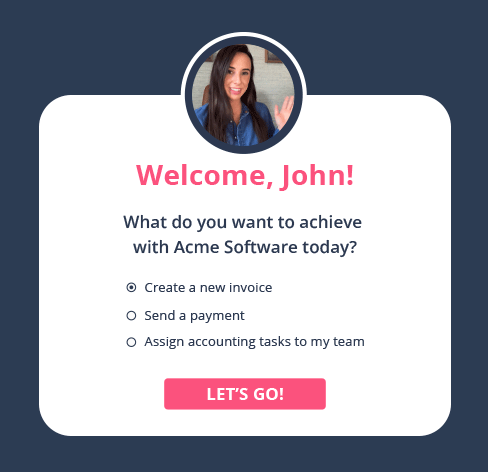
Le domande del sondaggio in-app per l’utente persona includono:
-
Qual è il suo ruolo nella sua azienda?
-
Per che cosa utilizzerete principalmente il prodotto?
-
Quale “lavoro” state principalmente “ingaggiando” per il nostro prodotto?
-
Cosa volete ottenere con la nostra app?
-
Utilizzerete questo prodotto da soli o come parte di un team?
-
Avete già utilizzato un prodotto simile, è la prima volta che utilizzate X (ad esempio, uno strumento di email marketing)?
-
Come si colloca l’app rispetto alla concorrenza?
-
Vi state spostando da un altro strumento? Quale?
Le domande della ricerca di mercato includono:
-
Quale prezzo sareste disposti a pagare per il nostro prodotto? (scelta multipla)
-
Quanto trovate chiari i nostri prezzi? (scala)
-
Come giudica il rapporto qualità/prezzo del prodotto? (scala)
-
Se i prezzi dovessero cambiare, sareste felici di pagare di più? Perché o perché no?
Domande di indagine sulla soddisfazione e sull’esperienza degli utenti
Le indagini sulla soddisfazione e sull’esperienza degli utenti possono raccogliere sia feedback quantitativi che qualitativi. Tutto dipende dall’obiettivo che avete in mente per il sondaggio.
Potete raccogliere dati sulla soddisfazione complessiva dei vostri utenti, oppure approfondire una funzione specifica o una risorsa.
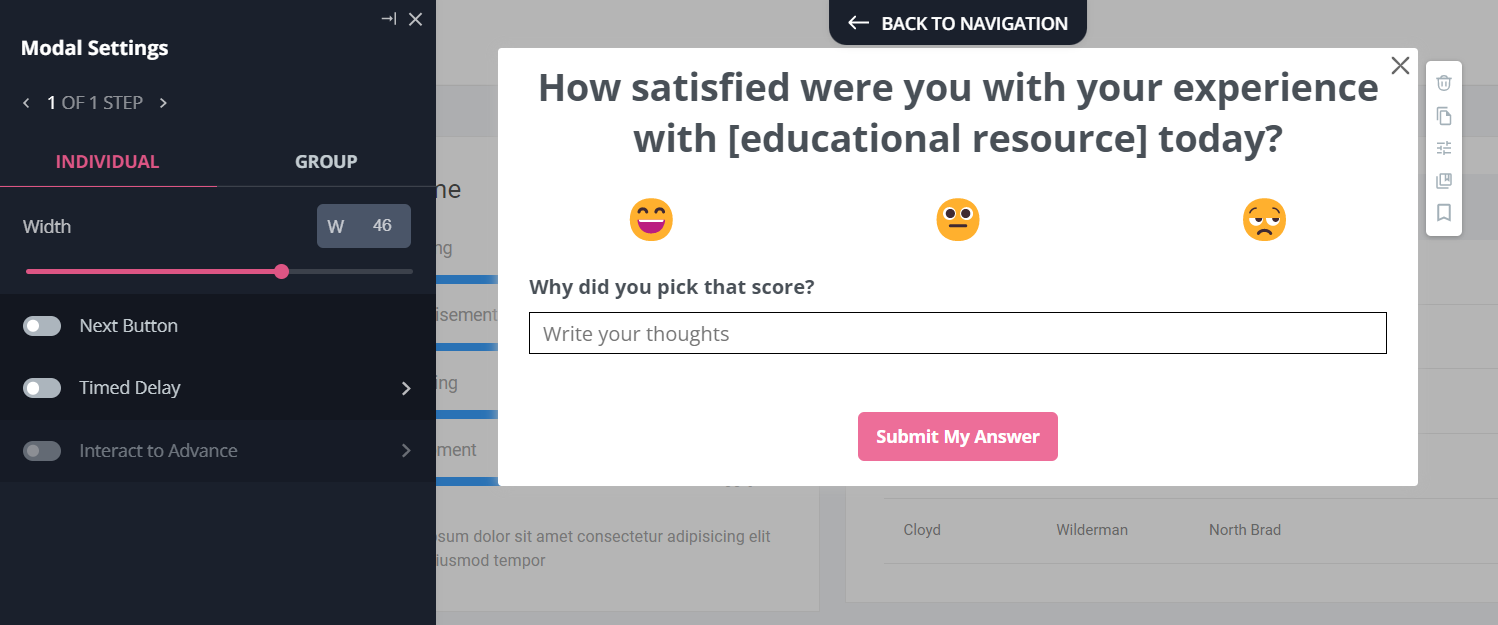
È possibile misurare la soddisfazione e l’esperienza dei clienti con sondaggi NPS, CSAT e CES che raccolgono principalmente dati quantitativi. Tuttavia, è possibile aggiungere una domanda di follow-up che può includere le seguenti domande:
-
Come giudica il nostro prodotto rispetto ai nostri concorrenti?
-
Come si sentirebbe se dovesse smettere di usare il nostro prodotto?
-
Consiglierebbe il nostro prodotto ad altri?
-
Com’è stata la sua esperienza con [new feature]?
-
Potete segnalare i problemi che rovinano la vostra esperienza con noi?
Domande del sondaggio UX
Il sondaggio UX è uno dei metodi di ricerca UX più comuni per ottenere informazioni qualitative e quantitative dagli utenti. Dovreste condurre indagini UX in tutte le fasi del percorso del cliente per identificare ciò che blocca gli utenti dal progredire.
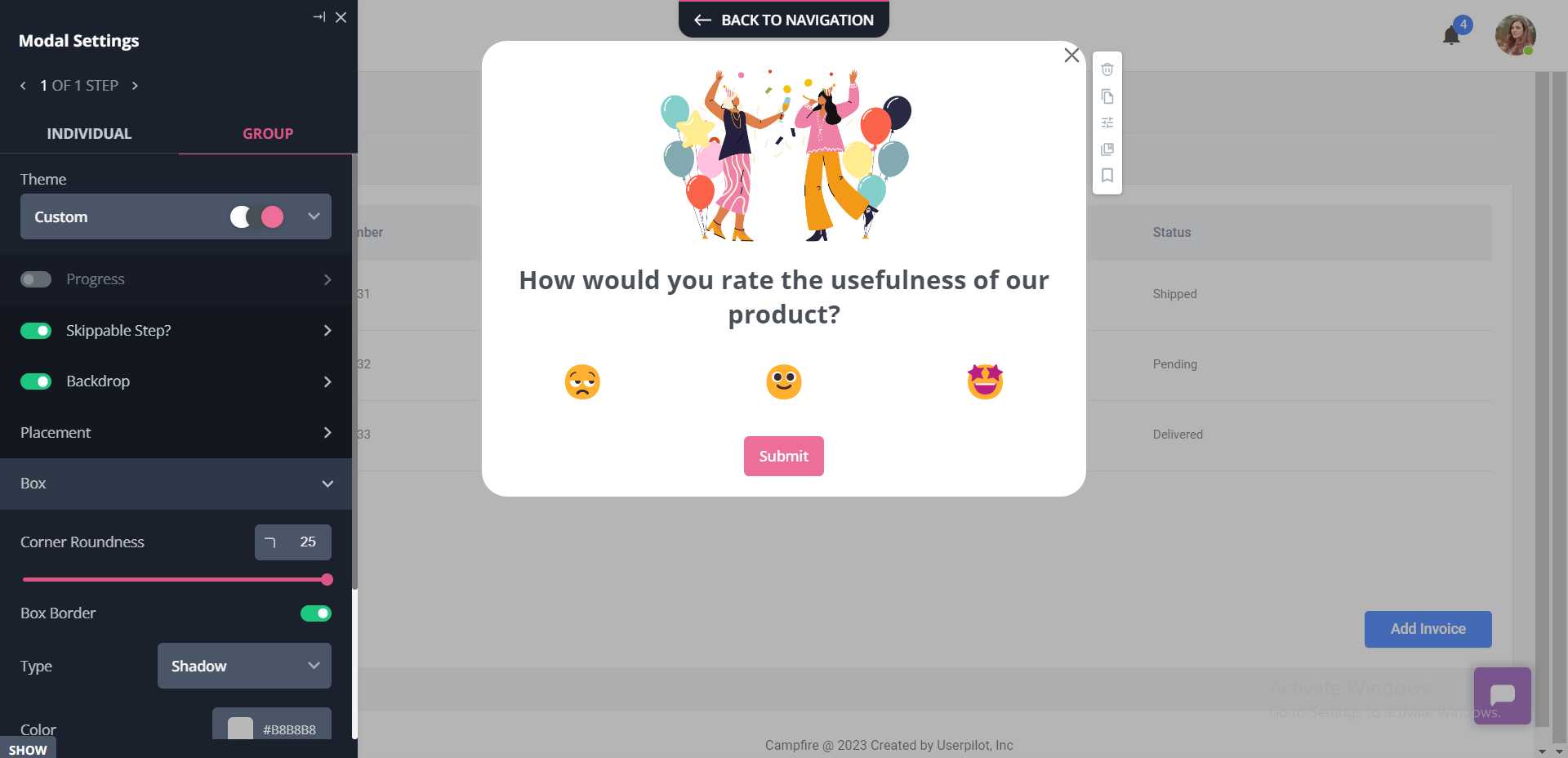
Ponete queste domande per ottenere un feedback generale sul prodotto e apportare modifiche al progetto dell’app:
-
C’è qualcosa che secondo lei il nostro prodotto potrebbe migliorare?
-
Quanto siete soddisfatti delle prestazioni/stabilità del nostro prodotto? (scala)
-
Stiamo cercando di risolvere[problema x]: in che modo la soluzione di questo problema con il nostro prodotto sarebbe utile per voi?
-
Come valuta l’utilità del nostro prodotto? (scala)
-
Come vi fa sentire questo design? (scelta multipla + campo di testo)
-
Quanto è stato facile completare il compito x? (scala)
Ponete queste domande per ottenere un feedback su particolari funzionalità/lanci di prodotto:
-
In che modo questa funzione risolve il vostro problema/aiuta a raggiungere i vostri obiettivi? Perché o perché no?
-
Siete riusciti a raggiungere il risultato desiderato con il nostro prodotto/caratteristica? Perché o perché no?
Domande sull’esperienza del servizio clienti
-
Il rappresentante dell’assistenza è stato in grado di risolvere il problema?
-
Siete soddisfatti dell’assistenza fornita dal nostro team di supporto?
-
Come giudica la sua esperienza con {membro del team}?
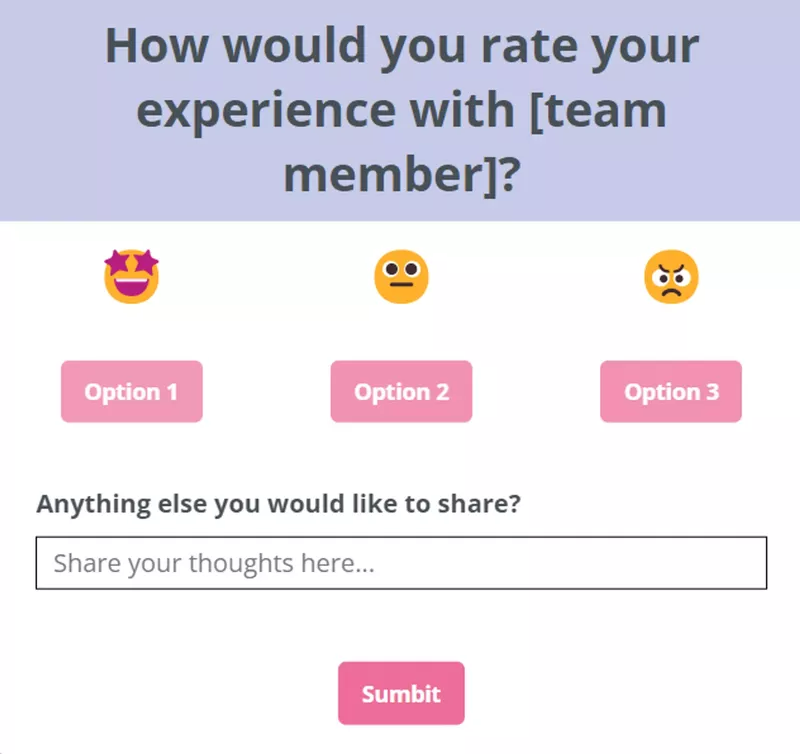
Domande del sondaggio sul programma beta
Quando si lavora su nuove funzionalità, si implementa il beta testing per ottenere informazioni preziose sulle funzionalità, in modo che il team di sviluppo possa lavorare per migliorarle. Ecco alcune domande che potete mettere in pratica per ottenere un feedback migliore:
-
Come giudica il nostro programma beta?
-
Ha trovato facile conoscere le sue responsabilità come tester?
-
Quanto è stato facile segnalare i problemi riscontrati?
-
Avete suggerimenti o commenti sul nostro programma beta?
-
Come giudica questa nuova funzione? Avete qualche suggerimento su come migliorarlo?
Domande del sondaggio Churn
I sondaggi sul churn sono il modo in cui si raccoglie il feedback degli utenti dopo che hanno deciso di cancellare o ridurre il loro piano di abbonamento. L’obiettivo dell’utilizzo dei sondaggi sul churn è quello di raccogliere il feedback dei clienti in modo da poter agire su di esso per migliorare il prodotto e ridurre il churn.
Esempi di domande del sondaggio Churn sono:
-
Qual è il motivo principale per cui sta cancellando il suo account?
-
Perché ha deciso di annullare l’abbonamento?
-
Cosa ti ha spinto a cancellare il tuo account?
Non dimenticate di lasciare una pagina per le domande aperte, in modo che gli utenti possano scrivere con le loro parole il motivo della cancellazione.

Create e progettate sondaggi con Userpilot!

Come Userpilot può aiutarvi con i sondaggi in-app
Se state cercando un modo semplice e veloce per implementare vari tipi di micro sondaggi ed esperienze per il vostro prodotto, non cercate oltre.
Userpilot è stato progettato per voi. Userpilot è una potente piattaforma per l’adozione di prodotti che consente di costruire rapidamente esperienze in-app personalizzate, flessibili e contestualmente rilevanti, mirate a diversi segmenti di utenti, il tutto senza scrivere una riga di codice.
Il vantaggio di utilizzare Userpilot per la raccolta di feedback è che potete controllare meglio chi vede i sondaggi, ma potete anche utilizzare immediatamente i dati raccolti per segmentare la vostra base di utenti e creare l’esperienza giusta per loro.
Tuttavia, Userpilot supporta solo le applicazioni web/desktop, quindi non sarà possibile creare domande d’indagine per gli utenti di applicazioni mobili.
Creare e personalizzare i sondaggi in-app
Con Userpilot, potete costruire e attivare microsondaggi in-app come il classico sondaggio PMF, o altri simili, e combinare domande a scelta multipla e aperte per raccogliere informazioni specifiche.
Inoltre, è possibile raccogliere e tracciare(NPS) in-app con un widget NPS integrato che consente di personalizzare completamente l’aspetto del sondaggio e di impostare la frequenza di attivazione e il targeting specifico.
Inviare sondaggi a un pubblico mirato
Con Userpilot, potete decidere chi riceve quale tipo di sondaggio e quando, grazie a funzionalità di segmentazione avanzate, e naturalmente potete utilizzare le risposte per segmentare il vostro pubblico.
Inoltre, se i vostri utenti vi danno un punteggio NPS basso perché pensano che vi manchi una funzionalità critica (che in realtà avete già), potete attivare un percorso interattivo che li guidi a trovare ed esplorare questa funzionalità.
Risposte al sondaggio NPS con tag
È possibile analizzare i punteggi NPS, etichettare le risposte e utilizzare i dati per creare segmenti di utenti specifici. Inoltre, analizzate in dettaglio il feedback del sondaggio:
Conclusione
I sondaggi sulle app sono il modo più efficace e sofisticato per migliorare l’esperienza dell’utente e lo sviluppo del prodotto, con innumerevoli vantaggi.
Ora che sapete tutto sulle domande dei sondaggi per app, da cosa sono e come distribuirle, vi servirà uno strumento in grado di farlo.
In fin dei conti, il modo in cui vi adattate al feedback degli utenti può determinare la vostra crescita futura. Se volete iniziare a raccogliere feedback dagli utenti o costruire un sondaggio NPS senza scrivere una sola riga di codice, allora è il momento di ottenere una demo di Userpilot oggi stesso!
Prova Userpilot per i sondaggi in-app oggi stesso!

